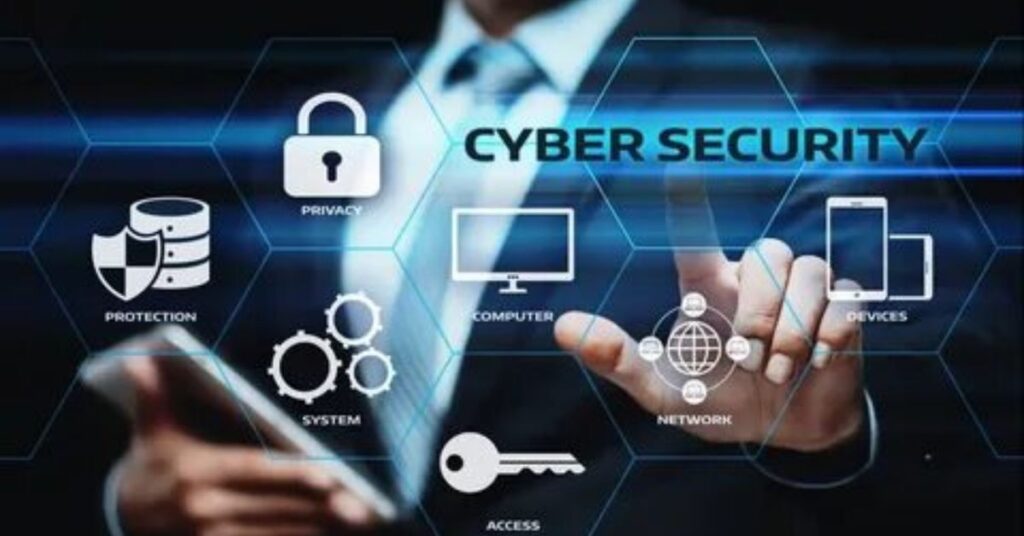In today’s digital wild west, vulnerability management isn’t just a fancy term—it’s your organization’s bulletproof vest. But what exactly is it, and why should you care? Buckle up, because we’re about to dive into the nitty-gritty of keeping your digital assets safe and sound. Vulnerability Management: Why It’s Crucial for Cybersecurity Success.
What’s the Big Deal About Vulnerability Management?
Imagine your company’s network as a fortress. Now, picture vulnerability management as your vigilant guard, constantly patrolling the walls, looking for cracks, and fixing them before the bad guys can sneak in. It’s not just about finding weaknesses—it’s about prioritizing, patching, and preventing attacks before they happen.
“Vulnerability management is like flossing. It’s not the most exciting part of your routine, but ignore it, and you’ll end up with some serious problems.” – Jane Doe, Cybersecurity Expert
Automated Vulnerability Scanning: Your 24/7 Digital Watchdog
Gone are the days of manual security checks. Automated vulnerability scanning is like having a tireless robot on your team, constantly on the lookout for potential threats. These tools scan your systems round the clock, flagging issues faster than you can say “cybersecurity.”
But here’s the kicker: not all scanners are created equal. Some popular options include:
- Nessus
- Qualys
- OpenVAS
Pro tip: Run your scans frequently, but be prepared to wade through some false positives. It’s like panning for gold—you’ve got to sift through some dirt to find the nuggets. Vulnerability Management: Why It’s Crucial for Cybersecurity Success.
Risk-Based Prioritization: Because Not All Vulnerabilities Are Created Equal
You’ve found a bunch of vulnerabilities. Great! Now what? This is where risk-based prioritization comes in handy. It’s like triage in an ER—you’ve got to figure out which issues need immediate attention and which can wait.
Consider creating a prioritization matrix like this:
| Severity | Business Impact | Priority |
|---|---|---|
| High | High | Critical |
| High | Low | High |
| Low | High | Medium |
| Low | Low | Low |
Remember, a low-severity bug in your customer database might be more critical than a high-severity issue in a rarely-used internal tool.
Patch Management: Mending the Holes in Your Digital Armor
Patching is like changing the oil in your car. It’s not glamorous, but skip it, and you’re asking for trouble. Effective patch management is all about balance—you need to patch quickly enough to stay secure, but not so hastily that you break your systems.
Here are some patching best practices:
- Test patches in a non-production environment first
- Use automation to deploy patches across your network
- Keep a close eye on critical systems during and after patching
- Have a rollback plan in case things go sideways
Integration with SIEM Systems: Making Your Security Tools Play Nice
SIEM (Security Information and Event Management) systems are like the command center of your cybersecurity operation. Integrating vulnerability management with your SIEM is like giving your security team superpowers. They can correlate vulnerabilities with real-time threats, prioritize more effectively, and respond faster to potential incidents.
Case study: Company X integrated their vulnerability management tool with their SIEM and saw a 40% reduction in response time to critical vulnerabilities. Now that’s what I call a win!
Employee Awareness: Because Humans Are the Weakest Link
You can have the fanciest security tools in the world, but if Bob from accounting keeps clicking on phishing links, you’re in trouble. Employee awareness is crucial for effective vulnerability management.
Try these tactics to boost your team’s security savvy:
- Regular training sessions (make them fun, not boring!)
- Simulated phishing campaigns
- Rewards for reporting suspicious activities
- Clear, easy-to-follow security policies
Remember, creating a security-conscious culture isn’t a one-and-done deal. It’s an ongoing process that requires patience and persistence.
Conduct Routine Security Audits: Trust, but Verify
Security audits are like spring cleaning for your digital assets. They help you identify weaknesses, ensure compliance, and keep your security posture in tip-top shape. Whether you’re doing internal audits or bringing in outside experts, regular check-ups are crucial.
Pro tip: Don’t just file away those audit reports. Use them as a roadmap for improvement. Each finding is an opportunity to strengthen your defenses.
Implement Ongoing Monitoring: Because Cybersecurity Never Sleeps
Continuous monitoring is your early warning system. It’s like having a security camera that never blinks. With the right tools and processes in place, you can catch potential issues before they become full-blown crises.
Key metrics to track include:
- Number of open vulnerabilities
- Time to patch
- Recurring vulnerabilities
- System uptime
Establish a Vulnerability Disclosure Program: Turning Hackers into Allies
A vulnerability disclosure program is like putting out a “help wanted” sign for ethical hackers. It gives security researchers a safe, legal way to report vulnerabilities they find in your systems.
Companies like Google and Microsoft have had great success with these programs. They’ve fixed countless vulnerabilities and improved their security, all while building goodwill in the security community.
Develop a Robust Incident Response Plan: Hope for the Best, Prepare for the Worst
An incident response plan is your playbook for when things go wrong. It’s not enough to have a plan gathering dust on a shelf—you need to test it, update it, and make sure everyone knows their role.
Key components of a solid incident response plan include:
- Clear roles and responsibilities
- Communication protocols
- Containment and eradication procedures
- Recovery and Lessons Learned Processes
Remember, the goal isn’t just to respond to incidents—it’s to learn from them and come back stronger.
Keep Software Updated: Because Outdated Software is Low-Hanging Fruit for Attackers
Keeping your software up-to-date is like getting your flu shot—it might be a bit of a hassle, but it’s a whole lot better than the alternative. Outdated software is one of the easiest ways for attackers to gain a foothold in your systems.
Balancing updates with system stability can be tricky, especially in large organizations. Consider using a phased approach, starting with non-critical systems and working your way up to more sensitive areas.
Use Threat Intelligence: Knowledge is Power
Threat intelligence is like having a crystal ball for cybersecurity. It helps you understand the tactics, techniques, and procedures (TTPs) of potential attackers, so you can better defend against them.
Some great sources of threat intelligence include:
- US-CERT
- MITRE ATT&CK Framework
- Industry-specific Information Sharing and Analysis Centers (ISACs)
By incorporating threat intelligence into your vulnerability management process, you can prioritize your efforts more effectively and stay one step ahead of the bad guys. Vulnerability Management: Why It’s Crucial for Cybersecurity Success.
FAQs
Q: How often should we run vulnerability scans?
A: It depends on your organization’s risk profile, but a good rule of thumb is at least weekly for critical systems, and monthly for less sensitive areas.
Q: What’s the difference between a vulnerability assessment and a penetration test?
A: A vulnerability assessment identifies and classifies vulnerabilities in your systems. A penetration test goes a step further by actively exploiting those vulnerabilities to demonstrate potential impact.
Q: How do we prioritize vulnerabilities when everything seems critical?
A: Focus on the intersection of vulnerability severity and business impact. A high-severity vulnerability in a low-impact system might be less critical than a medium-severity vulnerability in a mission-critical application.






